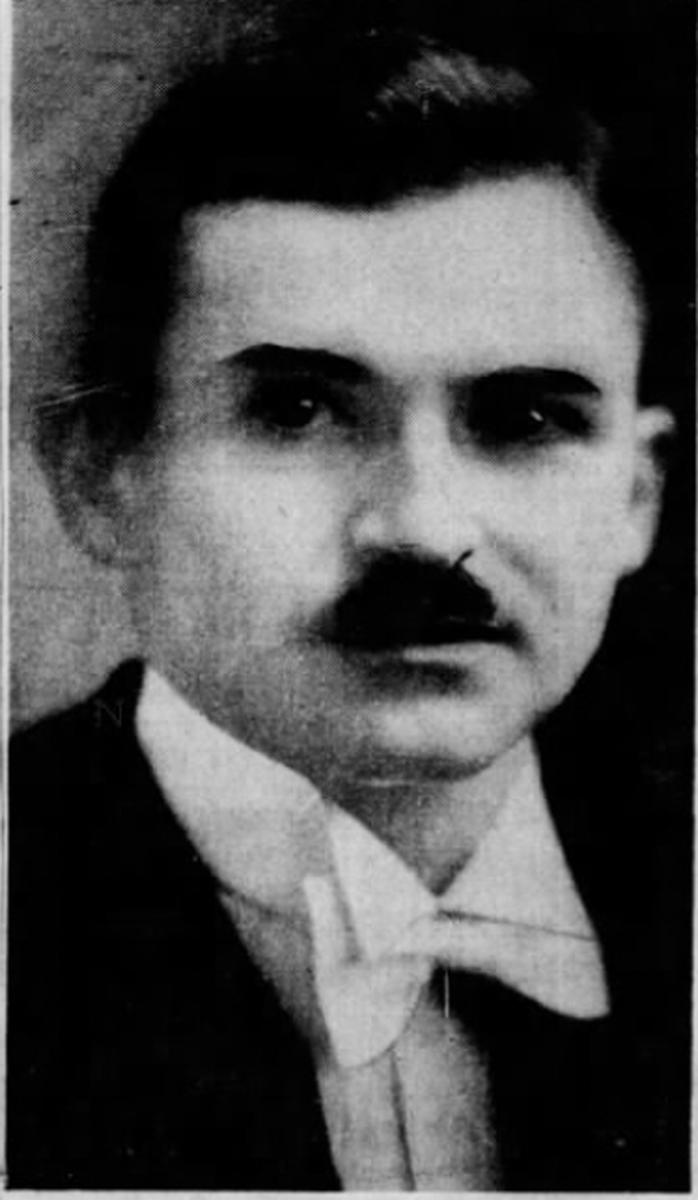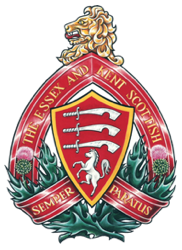The Tragic Deaths of Capt. Dr. W. Wallace Beasley and Lieutenant J. Hamilton Askin

Photo of Dr. W. Wallace Beasley
Upon enlisting, soldiers expect to face danger and life-threatening risks on the battlefield. However, unexpected tragedy struck when two soldiers of the Essex Scottish were killed when they fell from the rear of a C.P.R. train in the early morning of 26 January 1935. The loss of these two officers, Captain Dr. W. Wallace Beasley, M.D., C.A.M.C., and Lieutenant J. Hamilton Askin, left an indelible mark on the Windsor community.
Born on 7 December 1904 in Sandwich, Ontario Beasley was a captain in H.Q. Company of the Essex Scottish. After attending Assumption College, Beasley graduated from Western University’s medical school in 1931. He served with the Essex Scottish primarily during the interwar period and was responsible for performing routine medical services with the Canadian Army Medical Corps. Alongside his military service, Dr. Beasley also carried out a private general medical practice with his father. The family resided at the Duff-Baby House, a heritage house in Sandwich, which was given to the province of Ontario in 1979. As was customary at the time for Essex Scottish officers, Beasley received a framed hat badge and collar dogs from his fellow officers when he married on 18 September 1934.
Lieutenant J. Hamilton Askin was a member of the Essex Scottish for seven years, becoming an integral member of the “Three Musketeers” who helped the Essex Scottish to excel at using the Lewis machine gun. Together with Captain Hayhurst and Lieutenant Aitchison, the trio led the Essex Scottish to a first-place finish at the Ontario Rifle Association annual competition in 1933. Askin also received an individual prize for skill at rifle shooting at the tournament. Working together for five years, the small arms team in which Askin participated was responsible for the dominance of the regiment at rifle tournaments both during his tenure and afterward. He helped to make using a Lewis gun “a fine art” and a specialty for the regiment. The group was broken up after Askin’s death in 1934, though its reputation for excellence remained. Askin was described as an “enthusiastic” member of the Essex Scottish; he worked full-time at the Chrysler Assembly Plant and like all reserve army soldiers at the time trained part-time with the regiment on evenings and some weekends.
On the evening of 25 January, the two men had attended a dinner in London featuring forty officers from the Essex Scottish and 200 officers total from across Western Ontario. The event honoured Canadian Minister of National Defense, Hon. Grote Stirling upon his appointment to the post. The men boarded the train as it departed London that evening for the return trip to Windsor, and the men were reported missing 25 miles east of London. It was determined that at approximately 1:15am the following morning that they were mortally injured from the fall off the rear platform. Another officer, Lieutenant James Gow, had been invited to join them on the platform but had deemed the position to be too dangerous and was therefore not present when the accident occurred. A coroner’s inquiry into the accident was held, with 17 officers from the Essex Scottish traveling to voluntarily testify. It is speculated that Dr. Beasley lost his life trying to save Lieutenant Askin, but this was never proven.
Funeral processions for Beasley and Atkins were held on Wednesday, 30 January 1935 in Windsor. A private service for Beasley was held at the Beasley home before travelling to St. John’s Anglican Church for a public tribute. A ceremony was held later in the day for Lieutenant Askin at Morris Funeral Home before a public service took place at All Saints’ Church. Thousands of people were present at the public funeral processions to pay their respects and grieve the untimely loss of the two officers. The men were transported via regimental guncarriage before being moved to funeral vehicles. Their caskets were draped in the Essex Scottish regimental flag, and they were given full military honours at the proceedings, including a ceremonial rifle volley and the playing of the Last Post and Pipers’ Lament. Dr. Beasley was interred at St. John’s Cemetery while Lieutenant Askin was laid to rest at Green Lawn Memorial Park.
Story by Nicole Pillon, Canada Summer Jobs 2023 participant
with The Essex and Kent Scottish Regiment Association
Sources
- “Medical Men of Essex County” pg. 32
- Essex and Kent Scottish Regimental Scrapbooks
- Clippings from The Border Cities Star, 1935

Photo of Lieutenant J. Hamilton Askin

Photo of the framed hat badge and collar dogs given to Dr. Beasley upon his marriage on 18 September 1934
